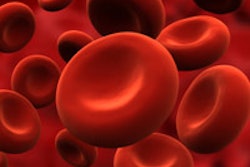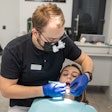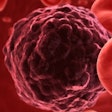
A web-based nomogram can help decide which patients with oral cavity squamous cell carcinoma (OCSCC) will benefit from adjuvant radiotherapy, according to a study in JAMA Otolaryngology -- Head & Neck Surgery (May 16, 2013).
A nomogram is a graphical analog computation device in which a 2D diagram enables the approximate graphical computation of a function. Nomograms are used increasingly in medicine to aid in the prediction of cancer risk, prevention, and therapeutic outcomes.
Oral cancers are the sixth most common type of cancer worldwide with an estimated 41,380 new cases expected to be diagnosed in the U.S. in 2013, half of which will be OCSCC, the study authors noted. For OCSCC, surgery is the preferred primary therapy, but because of the high rate of locoregional recurrence, adjuvant radiotherapy or chemotherapy is often recommended. Patients thought to be at higher risk are often offered postoperative radiotherapy to reduce the risk.
Only certain subsets of high-risk patients will benefit from adjuvant therapy, and determining which patients will benefit remains a challenge, the researchers noted. Thus a multivariate survival prediction model may be able to provide insight into these important clinical questions.
"Clinical prediction calculators and nomograms are becoming increasingly popular decision aids in predicting cancer risk, prevention, and therapeutic outcomes," wrote the international team of researchers. "Although prediction models can never substitute for evidence from prospective randomized clinical trials, these tools are useful adjuncts to clinical decision-making in situations where optimal therapeutic management may not be clear."
The nomogram used in this study was built using data from patients with OCSCC from Memorial Sloan Kettering Cancer Center and externally validated with data from Hospital AC Camargo. The researchers enhanced the model by explicitly adding the effects of adjuvant radiotherapy to the model. Using data from Princess Margaret Hospital as an external validation dataset allowed pooling of data from New York and Brazil for a larger sample size to construct an improved nomogram.
The training cohort consisted of 563 patients with OCSCC from New York and 416 patients from Brazil. The test cohort used to validate the model comprised 431 patients from Canada. Covariates included age, sex, tobacoo use, oral cavity subsite (floor of mouth, oral tongue, or other), T classification, N classification, grade, and margin status. The primary outcome measure of interest was locoregional recurrence-free survival.
Of the 979 patients included in the training set, 49% received adjuvant radiotherapy. Patients treated with adjuvant radiotherapy tended to have OCSCC that was of higher T classification, node positive, higher grade, and had positive margins.
In general, the prediction model found that patients with positive margins and/or N2 to N3 disease will get the most benefit from adjuvant radiotherapy, the researchers found.
None of the patients included in the study received concurrent chemotherapy with postoperative radiotherapy, the researchers noted. "It is presumed that the addition of chemotherapy in high-risk patients would amplify the impact of radiotherapy observed in the study," they wrote.
In the long run, the researchers believe that these types of predictive models "will become increasingly important in the future as we attempt to improve outcomes by individualizing therapeutic recommendations."
However, the final decision of whether adjuvant therapy should be given should be made after a careful discussion between the clinician and patient, accounting for multiple factors, many of which cannot be accounted for in a prediction model, they emphasized.
"Quality of life and specific patient preferences are additional important considerations in treatment decision making," they added.



















